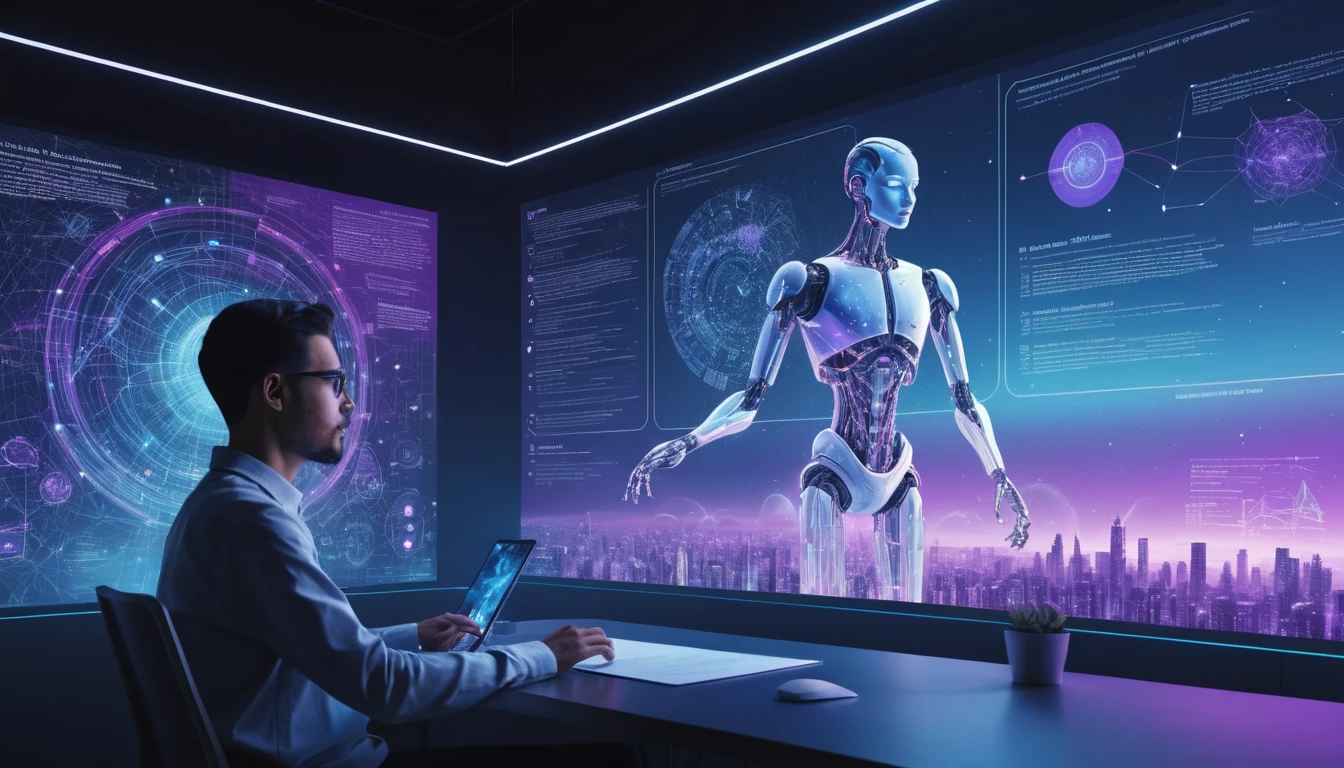Generative AI is the latest sensation in the tech world, and by 2025, it is going to change our lives in unbelievable ways. Let’s dive into what generative AI is, how it works, and the exciting changes we can look forward to in the near future.
Understanding Generative AI
Generative AI basically creates new content. Unlike traditional AI, which has set rules, generative AI will create text, images, music, and even videos like human creativity. This is made through advanced machine learning models, especially Generative Adversarial Networks and Transformers.
- GANs: Imagine two rival neural networks that are friendly in their fight. One generates data (the generator), and the other is to judge that data (the discriminator). The generator is continually improving at producing realistic data, leading to GANs as a form of a powerful tool for creating rather believable content.
- Transformers: Models like OpenAI’s GPT-3 have changed the game when it comes to understanding and generating language. They can predict and generate coherent text based on large volumes of data.
Practical Applications
There are already some fantastic examples in many fields and are only growing further:
1. Content Creation:
Writing and Journalism: GPT-3 can write articles, reports, and even poetry, making them invaluable for writers and journalists seeking to enhance their creativity and productivity.
Art and Design: This AI helps artists through “wow” digital arts and 3D models, among others. These things perhaps would not have come into consideration without this technology.
2. Entertainment
Video Games
Characters and storylines developed through AI give that new gaming feel every time you play.
Composition Music: AI models can compose any genre of music that will allow musicians to explore new melodies and harmonies.
3. Healthcare
Drug Discovery: By using machine learning, the AI can predict structures that will work as drugs, with a wide scale in their discovery.
Medical Imaging: Generative AI can reconstruct images with high resolution from poor-quality scans, thus improving diagnostics and treatment plans.
What’s in store for 2025?
Generative AI is expected to dig its roots even deeper into life and industries. Here are some of the key trends coming our way.
1. Hyper-Personalization It will personalize content and services more than ever before, offering fine-tuned experiences on different portals and platforms.
2. Augmentative Creativity: Far from supplanting human creativity, AI will collaborate with artists, writers, and designers to produce new possibilities.
3. Efficient Automation: Generative AI will automate complex processes in manufacturing and logistics, hence promoting efficiency and minimal errors.
4. Ethical Development of AI: With more AI pervasive, developing ethical guidelines and regulatory frameworks will be important to ensure appropriate use.
Amelioration of Ethical Concerns
As generative AI develops, a host of ethical issues need to be addressed: great power, great responsibility. Here are some important ones:
1. Bias and Fairness: Models in AI are trained through large datasets that carry biases. Artificial intelligence systems need to create equal or unbiased content, a mandate preventing societal stereotypes and misinformation.
2. Copyright and Ownership-Ownership: With the increased proliferation of AI-generated content, questions on Intellectual property rights would arise. Principles of ownership will have to be clear.
3. Deepfakes and Misinformation-The spread of highly credible, fake images, videos, and news items may assume gargantuan proportions. Combating deepfakes is going to be an enormous task.
4. Privacy: Using AI to generate personalized content requires access to user data. Protecting this data and maintaining user privacy must be a priority.
Conclusion
Generative AI is going to revolutionize our world in ways we can’t imagine, bringing forth great changes in creativity and industry and far beyond. From 2025 onwards, the applications of generative AI are myriad and unimaginable. There’s a need to navigate this landscape with a balanced approach to ethical use and public trust.
It is only the content creators, businesses, and innovators who can follow up on the developments to unleash all the potential of generative AI. Careful embracing will therefore come with a future where the time for such hand-in-hand production will bring out extraordinary possibilities between technology and human creativity.
